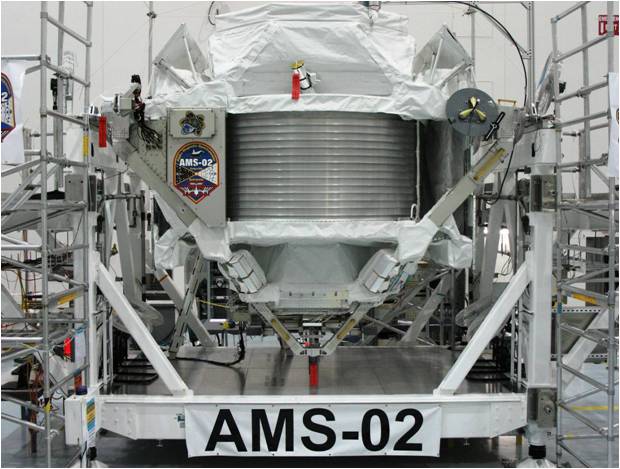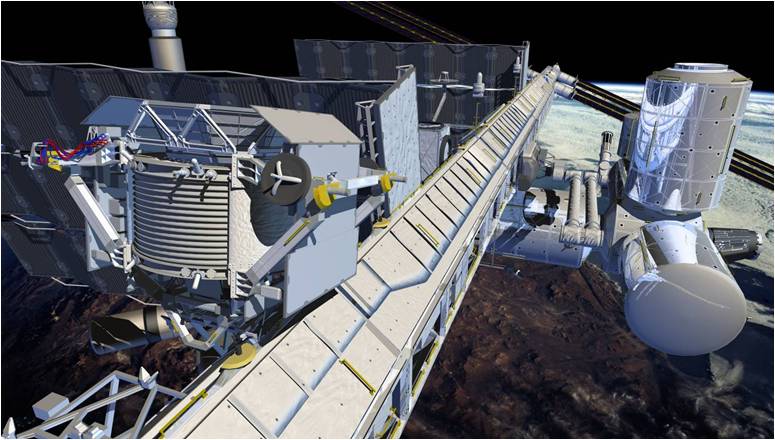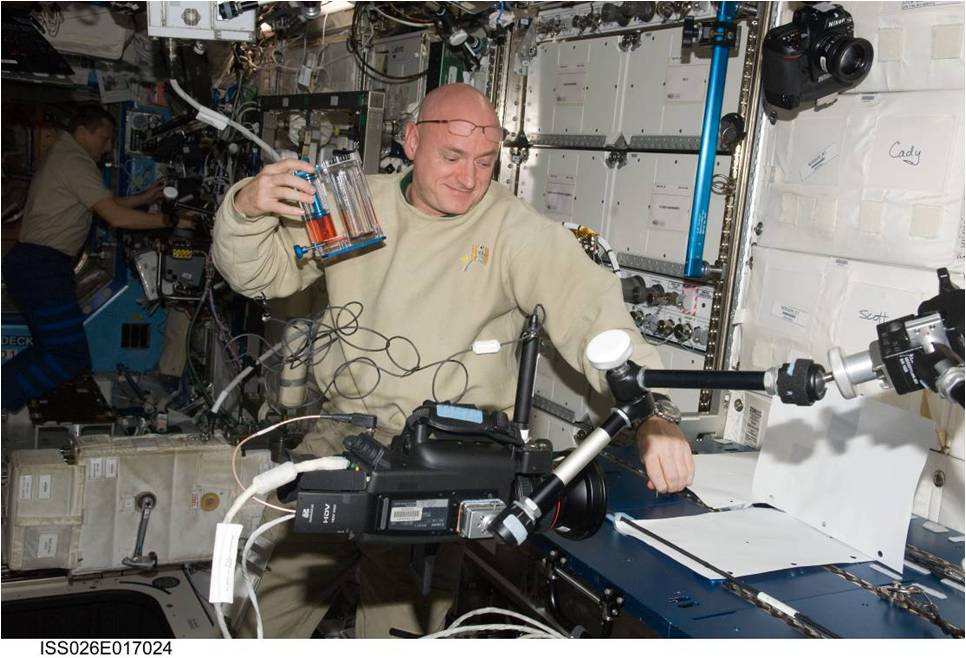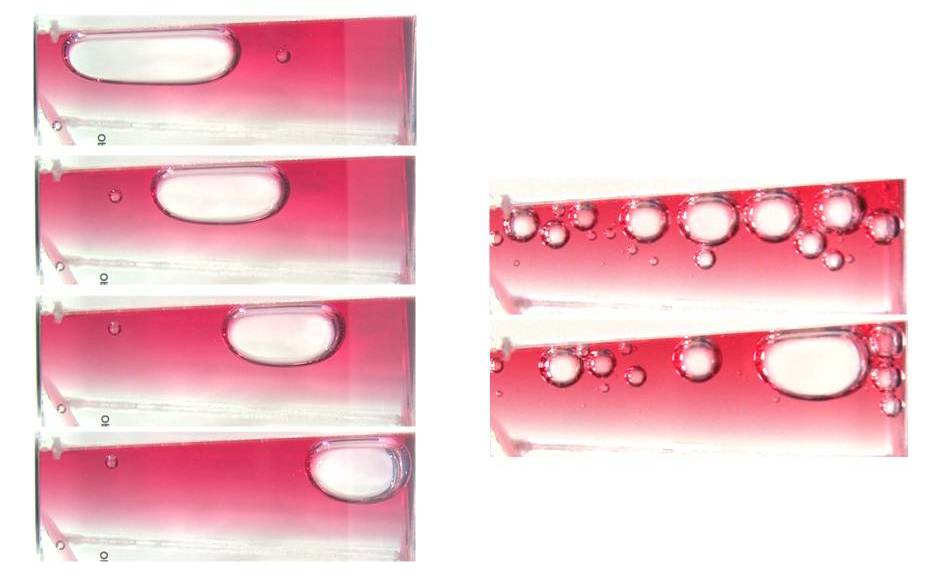This week on A Lab Aloft, guest bloggers Trent Martin and Ken Bollweg share their recollections of working on the Alpha Magnetic Spectrometer and their excitement as the investigation ramps up to launch on STS-134, scheduled for May 16, 2011. With the launch of the Space Shuttle Endeavour STS-134 mission, the hopes and dreams of over 600 physicists, engineers and technicians from 60 institutes in 16 different nations will be carried to International Space Station. The flight is poised to take the Alpha Magnetic Spectrometer – 02 or AMS-02 to its final perch on the top of the space station, where it will finally begin its much anticipated operations.
The payload is sponsored by the United States Department of Energy, but funding comes from all over the world. This type of international collaboration is common in the world of high energy physics research for the last 50 years and is starting to become more common in the space science community. To date, AMS is the most diversely funded space-based science detector ever built. This is the type of collaboration that NASA hopes the space station National Laboratory will help continue to foster in the space scientific community.
Development of AMS was required to follow NASA standards for flight and ground safety and NASA retained the right to veto anything that violated those requirements. The AMS Collaboration has official responsibility for mission assurance though all the experiment hardware and software were developed to accommodate NASA recommendations for compatibility, reliability, and redundancy.
The successful precursor flight of AMS-01 on STS-91 took place with the last Shuttle-Mir mission in June 1998. There were some communications issues, due to a failed Ku-Band antenna, but the AMS detector performed as expected. The prototype engineering evaluation flight led to improved sensitivity of the measurement of antihelium and helium flux ratio by one part per million and AMS is expected to improve this to one part per billion.

View from Mir of AMS-01 and SpaceHab on STS-91
in June 1998.
(Image courtesy of NASA)

AMS integrated with the USS-02 and Vacuum Case in
the Space Station Processing Facility (SSPF) at KSC,
March 2011.
(Image courtesy of NASA)
The complexity of the experiment and its interfaces continued to increase as the number of data channels grew from ~70,000 on AMS-01 to over 300,000 on AMS-02. The tremendous amount of data the experiment is expected to produce required detailed command and data interface coordination with the space shuttle and station. When the decision was made to extend the life of the ISS, the AMS Collaboration decided it would benefit the experiment to use the infinite life of the original Permanent Magnet instead of the limited life of the Cryogenic Magnet.
Of course, without the space shuttle there would be no way of getting AMS to the space. The shuttle, which will retire this year, provides the gentlest ride to space of any manned or unmanned launch system ever developed. What’s more, without the space station, there would be no location for operations. The station solar arrays make the station the only currently available resource platform capable of generating enough energy to power the AMS and successfully run the investigation.
The ISS National Laboratory is just beginning to realize its potential as a research facility and the AMS investigation will play a significant role in helping to achieve this goal. The station provides guidance, navigation, and attitude control for the experiment. It also provides power, command, and data systems to control the experiment and to relay its data to the ground. NASA provides the tracking relay data satellites, ground stations, and control centers to transfer the commands and data to/from the AMS Payload Operations Control Centers at Johnson Space Center and at CERN.

AMS (foreground) as it will appear when attached to the International
Space Station National Laboratory.
(Image courtesy of NASA)

AMS-02 Ready for Launch in Endeavour’s Payload Bay April 2011.
(Image courtesy of M. Famiglietti)
Although the primary purpose of the AMS-02 payload is to search for antimatter and dark matter, the detector represents the most advanced charge particle detector ever flown in space. In the words of Prof. Ting, “The issues of antimatter in the universe and the origin of Dark Matter probe the foundations of modern physics,” but more importantly “the most exciting objective of AMS is to probe the unknown; to search for phenomena which exist in nature that we have not yet imagined nor had the tools to discover.” With AMS-02, we may now have those tools.
It has been an honor to work with the AMS Collaboration and Nobel prize winner, Professor Ting. I look forward to the launch of this incredible particle detector and to the discoveries and strides it will yield for the field of physics.
Trent Martin is the AMS Project Manager from the Johnson Space Center. He has worked on AMS since 1995 in various capacities for both Lockheed Martin and NASA. In addition, he currently manages the JSC James Webb Space Telescope activities and is a branch chief in the Engineering Directorate.
Ken Bollweg is the AMS Deputy Project Manager from Johnson Space Center. He has worked on AMS since 1994 in various capacities for both Lockheed Martin and NASA. Over the last five years, he and his family has spent three years living in Europe during the integration of AMS.






